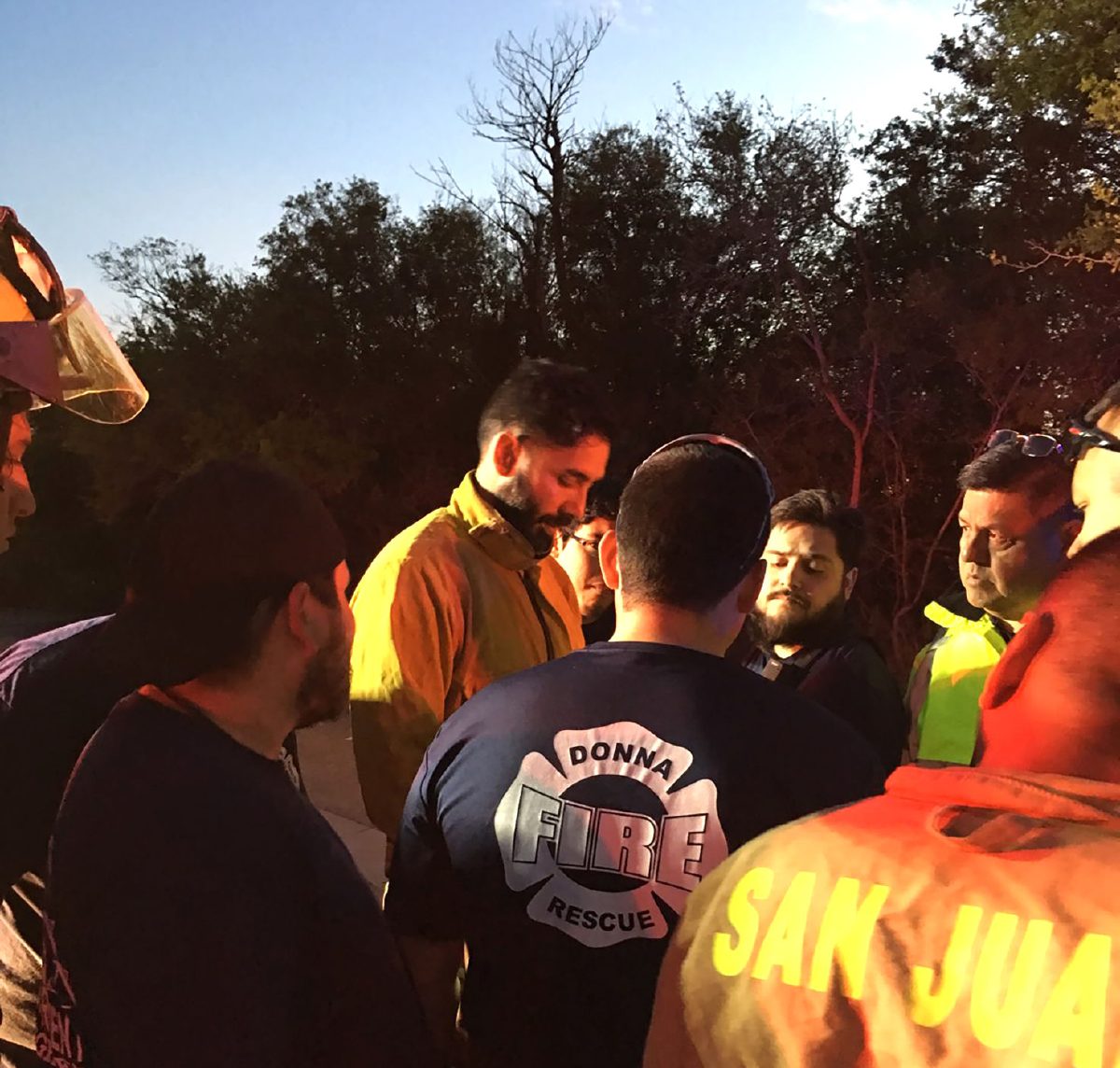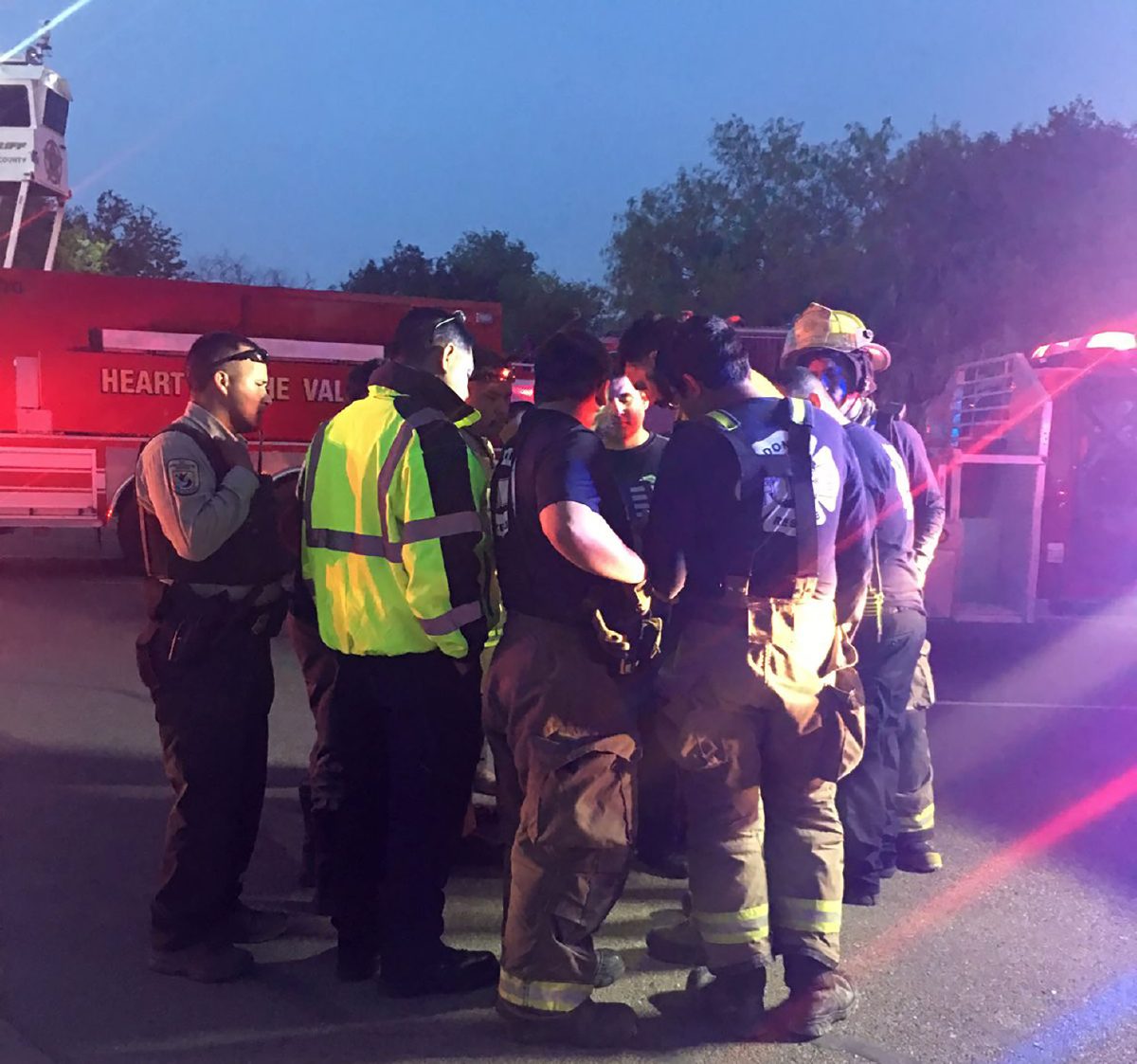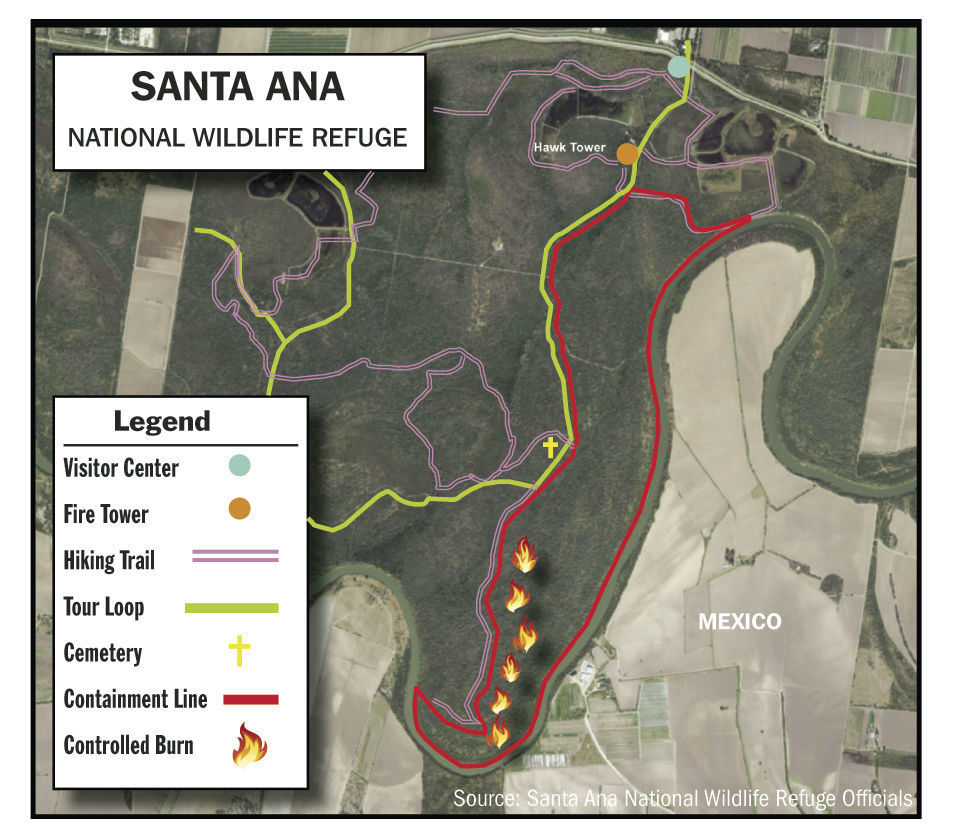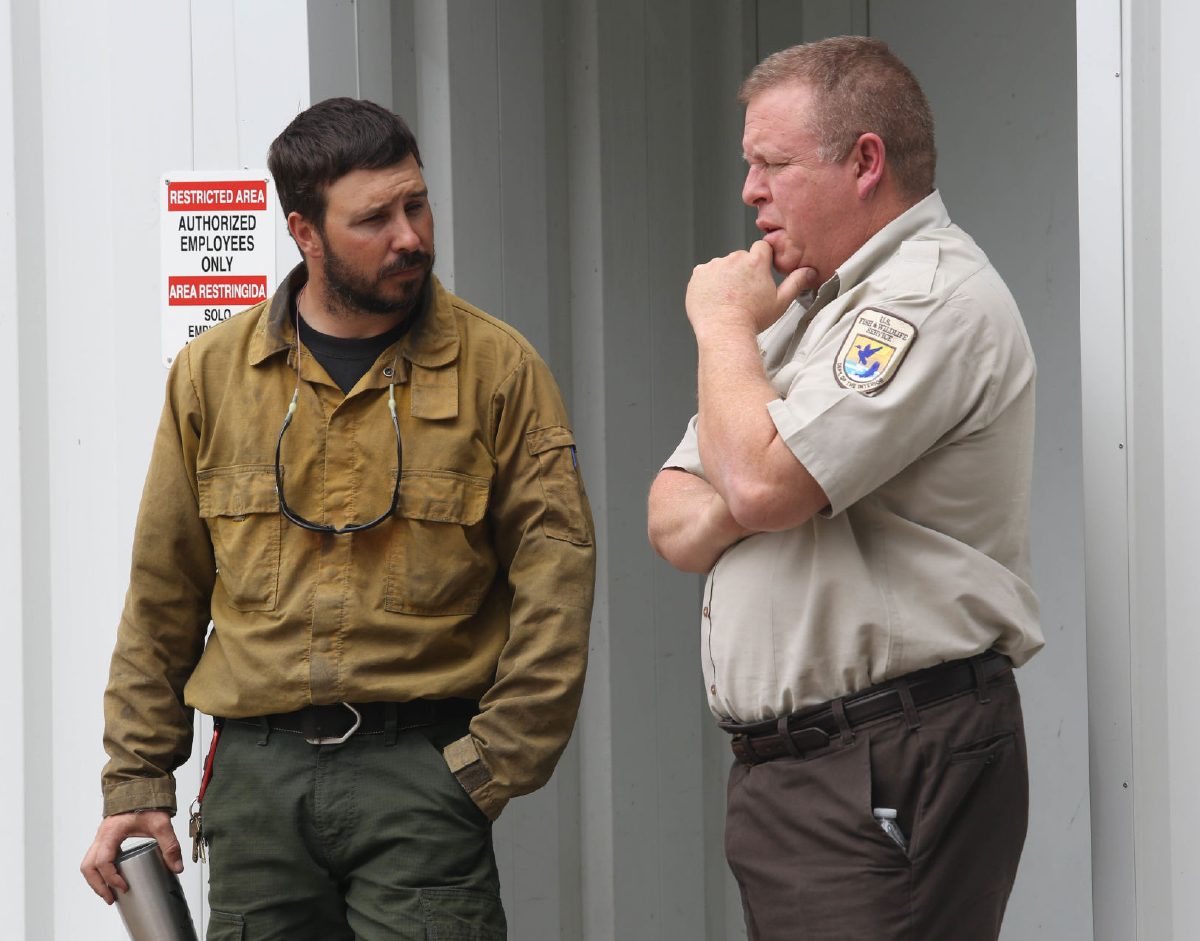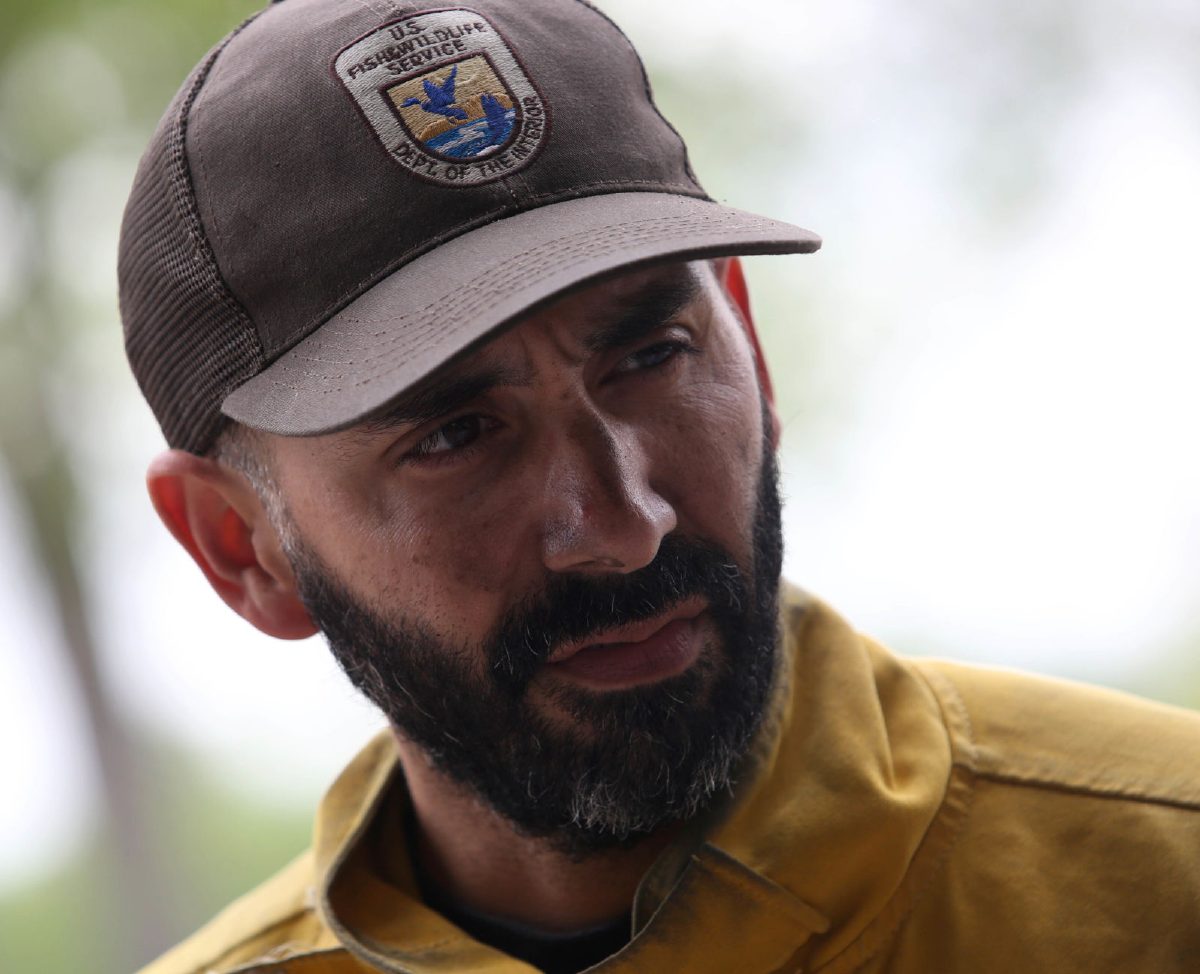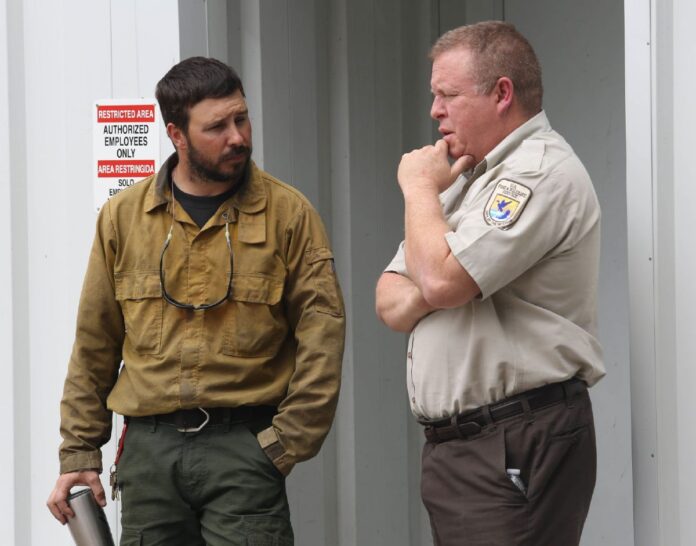
ALAMO — A fire affecting nearly 300 acres at the Santa Ana National Wildlife Refuge is “100 percent contained,” according to the site incident commander.
ALAMO — A fire affecting nearly 300 acres at the Santa Ana National Wildlife Refuge is “100 percent contained,” according to the site incident commander.
Assistant fire management officer with U.S. Fish and Wildlife, Scott Affeldt, said the fire is extremely unlikely to get bigger, but 20 to 25 percent within the more than 300-acre containment area “will slowly consume throughout the day or naturally go out.”
A crew is assessing the exact size of the containment area, which utilizes existing trails and a roadway, with GPS. Eleven firefighters are currently monitoring and controlling flames near the containment line, which makes the chance of the fire spreading “extremely marginal,” said Affeldt.
Burning embers “jumped” the Rio Grande River causing the fire, according to officials.
At about 3 p.m. Wednesday, wildlife fire crews were called to the refuge — a more than 2,000-acre wildlife tract in Alamo — after officials reported a fire that began along the river bank, said Santa Ana National Wildlife Refuge complex project leader, Robert Jess.
“It’s a line we drew in the sand,” Jess said Thursday. “This is the point where we’re not going to allow it to get past this.”
He said fire crews from Alamo, Donna, San Juan, Pharr, and U.S. Fish and Wildlife, are being cautious in their approach to the fire — citing heavy brush as a factor in their limited access to fight the fire directly.
Crews are utilizing a technique called “back burns,” or controlled fires that are designed to burn in the opposite direction of the wind and the fast burning fire. This in an attempt to slow it down and rehabilitate the soil burned by the fire, said assistant fire management officer with U.S. Fish and Wildlife, Rey Navarro.
This technique is also used to ensure the safety of the wildfire crewmembers, Navarro said.
“One of the advantages is we’re pulling the crews out,” Navarro said. “It’s a safer method in fighting fires. The disadvantage of it — we’re obviously burning more acres.”
The park will likely reopen to the public within the next few days, said Affeldt. While the fire poses no immediate danger to guest, weakened branches, or hazard trees, are the biggest threat to visitors.

